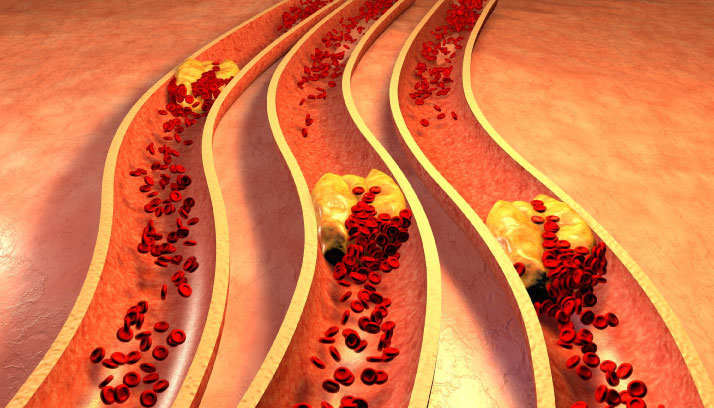When we hear about arteriosclerosis and atherosclerosis, heart disease is usually the topic. But these conditions, which involve damage to the arterial walls, also affect your entire body.
The damage of arteriosclerosis and atherosclerosis can affect your heart, lungs, brain, neck, legs, arms, and virtually any part of the body because everything from head to toe needs nourishing blood flow.
What is Arteriosclerosis?
Arteriosclerosis occurs when the arteries become stiff and hard. It usually indicates damage from plaque in the form of cholesterol and other substances within the arteries. When your arteries are less flexible, they’re less able to allow free blood flow.
The stiffening of the arteries can eventually lead to a blockage or rupture. A clot may break loose and move through the body, as with a stroke, or it may remain in place and form a clog that restricts blood flow. Either way, you are developing a very serious health condition.
What is Atherosclerosis?
A similar condition, atherosclerosis, describes the narrowing of the arterial passageways. This narrowing can occur over time from a buildup of fat, calcium, cholesterol, and other material in the blood. It can also happen quite suddenly from a piece of plaque that breaks loose.
It’s common for arteriosclerosis and atherosclerosis to coincide in the body. Together, they deplete your body of the blood flow it needs to keep your organs healthy and your systems operating optimally.
What Complications are Associated with Athero or Arteriosclerosis?
The complications of atherosclerosis depend on which arteries are blocked. For example:
- Coronary artery disease. When atherosclerosis narrows the arteries close to your heart, you may develop coronary artery disease, which can cause chest pain (angina), a heart attack or heart
- Carotid artery disease. When atherosclerosis narrows the arteries close to your brain, you may develop carotid artery disease, which can cause a transient ischemic attack (TIA) or
- Peripheral artery disease. When atherosclerosis narrows the arteries in your arms or legs, you may develop circulation problems in your arms and legs called peripheral artery disease. This can make you less sensitive to heat and cold, increasing your risk of burns or frostbite. In rare cases, poor circulation in your arms or legs can cause tissue death (gangrene).
- Atherosclerosis can also cause aneurysms, a serious complication that can occur anywhere in your body. An aneurysm is a bulge in the wall of your artery.Most people with aneurysms have no symptoms. Pain and throbbing in the area of an aneurysm may occur and is a medical emergency.
If an aneurysm bursts, you may face life-threatening internal bleeding. Although this is usually a sudden, catastrophic event, a slow leak is possible. If a blood clot within an aneurysm dislodges, it may block an artery at some distant point.
- Chronic kidney disease. Atherosclerosis can cause the arteries leading to your kidneys to narrow, preventing oxygenated blood from reaching them. Over time, this can affect your kidney function, keeping waste from exiting your
How Do I Know if I Have Arteriosclerosis or Atherosclerosis?
Unfortunately, most people don’t realize they have these conditions until a health emergency occurs. A stroke can happen in moments. Of the 795,000 strokes that happen in the U.S. every year, 600,000 are first strokes that happen to people who have never had one before.
Although there are known risk factors for these conditions, like having a family history of heart disease and having high cholesterol, many people develop arteriosclerosis and atherosclerosis in the absence of common risk factors. Don’t assume you’d know if you had these conditions, because they’re not something you can necessarily feel in your body.
This is why it’s important to see a vascular specialist who can evaluate your risk for vein and artery conditions that threaten your health. Your vascular specialist has many tests and tools at their disposal, offering a painless and minimally-invasive way to peek inside your body and see what’s happening.
A simple, non-invasive screening is available at Maryland Vascular Specialists. Don’t delay, it could save your life.
SCHEDULE AN APPOINTMENT
